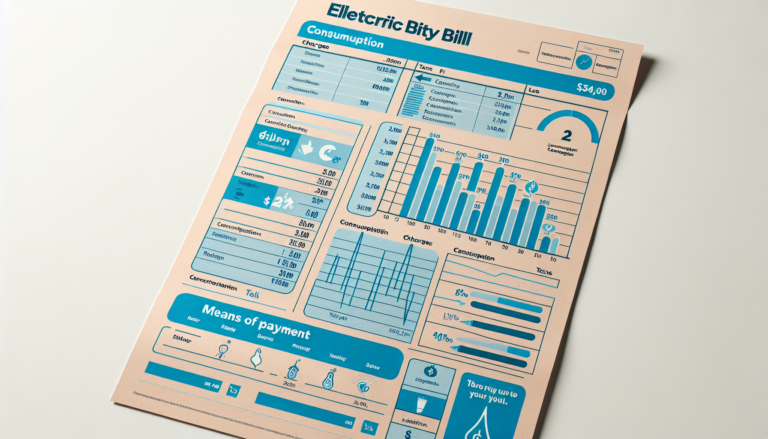Expert Tips: Best Ways to Invest Money in 2024
[ad_1]
In an ever-evolving financial landscape, identifying the best ways to invest money in 2024 has become crucial for both seasoned and novice investors alike. As markets expand and new investment opportunities arise, it’s imperative to navigate the myriad of options with a strategic eye. The importance of diversification, risk management, and long-term planning cannot be overstated in the quest to build a robust investment portfolio. Understanding the dynamics of real estate, the stock market, and other asset classes lays the foundation for smart investments that promise sustainable returns.
This article delves into the most effective ways to invest money across high-yield savings accounts, Certificates of Deposit (CDs), stock market investments, real estate, and retirement accounts. Each section is tailored to equip readers with the knowledge to make informed decisions, whether they are seeking short-term gains through CDs and high-yield savings accounts or aiming for long-term wealth accumulation through diversified portfolios in the stock market, real estate, and retirement planning. With an emphasis on financial planning, wealth management, and capitalizing on investment returns, the forthcoming discussion provides a comprehensive roadmap for anyone looking to enhance their investment strategy in 2024.
Also read: Revving Up for Takeoff: 3 Hot Flying Car Stocks for 2024.
High-Yield Savings Accounts
What They Are
High-yield savings accounts offer significantly higher interest rates than traditional savings accounts, typically around 5% compared to the national average of 0.45%. These accounts are federally insured, ensuring safety for deposited funds. Unlike regular savings accounts that might offer as low as 0.01% APY, high-yield savings accounts provide an opportunity for your balance to grow faster without any additional effort.
Benefits
- Higher Interest Rates: High-yield savings accounts earn rates much higher than other savings accounts, allowing your balance to grow more rapidly.
- Federal Insurance: These accounts are federally insured, offering a layer of security not present in investment products.
- Ease of Access: Many high-yield savings accounts can be opened online, providing convenience and accessibility.
- Compounding Interest: Interest in these accounts often compounds daily, leading to increased earnings over time.
- Flexibility: Funds are accessible without penalty, making these accounts ideal for short-term savings or emergency funds.
Drawbacks
- Minimum Balance Requirements: Some accounts may require a higher minimum balance compared to regular savings accounts.
- Online-Only: While the ability to open accounts online is convenient, some high-yield savings accounts are online-only, limiting face-to-face customer service.
- Variable Interest Rates: The interest rates can fluctuate, impacting the potential earnings over time.
- Withdrawal Limits: There may be limits on the number of free withdrawals and transfers, potentially incurring fees if exceeded.
Where to Get Them
High-yield savings accounts are available at online banks and credit unions, which typically offer higher interest rates due to lower overhead costs. When choosing the best account, it’s important to compare interest rates, fees, and account requirements to find the most suitable option. These institutions often provide fewer and lower fees, with many offering no monthly maintenance fees or minimum balance requirements.
Ways to invest money: Certificates of Deposit (CDs)
What They Are
Certificates of Deposit (CDs) are savings accounts that offer higher interest earnings than traditional savings accounts, with the added benefit of guaranteed returns. These accounts require depositing money for a fixed period, during which the funds cannot be withdrawn without incurring a penalty. The variety of CD types, including traditional, no-penalty, and jumbo CDs, among others, provides flexibility in choosing an account that fits individual financial goals.
Benefits
- Higher Interest Rates: CDs generally offer annual percentage yields (APYs) significantly higher than those of traditional savings accounts, making them an attractive option for earning more on your savings.
- Low-Risk: Considered low-risk investments, CDs are less volatile compared to stocks and bonds, offering a safer avenue to grow your money.
- Insurance Protection: Funds in CDs at banks or credit unions are insured, providing additional security for your investment.
- Guaranteed Returns: Unlike other investment options, CDs deliver a specific yield at a predetermined time, ensuring predictable returns.
- Diverse Options: With a range of maturities and yields available, investors can find CDs that best meet their financial needs and goals.
Drawbacks
- Early Withdrawal Penalties: Accessing funds before a CD’s maturity date can result in penalties, which could diminish the interest earned or even affect the principal amount.
- Inflation Risk: The fixed interest rates of CDs might not keep pace with inflation, potentially reducing the purchasing power of the invested money over time.
- Opportunity Cost: Investing in CDs could mean missing out on higher returns from more volatile asset classes like stocks or ETFs.
- Interest-Rate Risk: There’s a chance that interest rates will fall during the term of a CD, leading to lower yields upon reinvestment at maturity.
- Tax Implications: Taxes on the interest earned from CDs could reduce the overall returns, similar to the impact on savings accounts.
Where to Get Them
CDs can be opened at a variety of financial institutions, including banks, credit unions, and brokerages. Online banks and credit unions often offer the most competitive rates due to their lower operational costs compared to traditional brick-and-mortar banks. When selecting a CD, it’s crucial to compare rates, terms, and penalties across different institutions to ensure the best fit for your financial strategy.
Stock Market Investments
Stocks
Investing in stocks offers the potential for significant financial growth and can be a powerful way to build wealth. The U.S. stock market, as measured by indexes like the Morningstar US Market Index, has shown strong performance, outpacing bonds and international stocks over recent years. For those new to investing, starting with stock mutual funds or ETFs can be a prudent choice, allowing for diversification across a broad range of stocks with a single investment.
Exchange-Traded Funds (ETFs)
Exchange-Traded Funds (ETFs) provide an efficient way to diversify investments across various asset classes through a single transaction. These funds are traded on major stock exchanges and can include a mix of assets such as stocks, bonds, and commodities. ETFs are known for their low expense ratios and ease of trading, similar to stocks. They offer a balance of risk and return, making them suitable for both conservative and aggressive investors.
Mutual Funds
Mutual funds are a popular choice for both individual and institutional investors, offering an array of options from stock funds to bond funds. These funds pool money from many investors to purchase a diversified portfolio of stocks or bonds, managed by professional fund managers. Mutual funds are particularly favored in retirement accounts like 401(k)s due to their diversified nature and potential for growth. However, they typically have higher fees compared to ETFs, especially if they are actively managed.
By investing in a combination of stocks, ETFs, and mutual funds, investors can achieve a well-rounded portfolio that caters to different levels of risk tolerance and investment horizons. Each investment type offers unique benefits and risks, and the choice depends on individual financial goals and market conditions.
Ways to invest money: Real Estate
Direct Real Estate Investment
Investing directly in real estate involves purchasing properties to either rent out or sell for profit. This method, while traditional, requires significant capital for maintenance and to cover vacancies. The location remains a critical factor, influencing property valuations significantly due to proximity to amenities and potential future developments. Investors should consider various property valuation methods, such as the sales comparison approach or the income approach, to ensure a sound investment decision. Managing rental properties demands a readiness to handle tenant issues and legal matters, which can be daunting but rewarding if managed well.
Real Estate Investment Trusts (REITs)
REITs provide a more accessible option for investing in real estate without the burdens of direct property management. These trusts invest in various properties and distribute the majority of their taxable income as dividends to shareholders. Publicly traded REITs offer liquidity and are easy to buy and sell, akin to stocks, making them an attractive option for those seeking exposure to real estate without significant capital outlay. However, potential investors should be aware of the risks associated with REITs, such as interest rate sensitivity and property-specific risks. Equity REITs focus on owning properties, whereas mortgage REITs invest in property mortgages, each presenting unique risk and return profiles.
Retirement Accounts
401(k) and Roth 401(k)
Employer-sponsored plans like 401(k) and Roth 401(k) offer distinct tax advantages. Contributions to traditional 401(k) plans are pre-tax, reducing taxable income, whereas Roth 401(k) contributions are taxed upfront but withdrawals are tax-free in retirement. Understanding these differences is crucial for choosing the right plan based on future tax expectations and retirement goals.
Individual Retirement Accounts (IRA)
Individual Retirement Accounts (IRAs) provide a platform for diversified investments with different tax implications. Traditional IRAs offer tax-deferred growth, while Roth IRAs provide tax-free income in retirement, assuming certain conditions are met. The annual contribution limit for IRAs in 2024 is $7,000, with a $1,000 catch-up allowance for those over 50. It’s advisable to maximize contributions to benefit from potential tax deductions and compounded growth.
Importance of Employer Matches
Employer matching programs significantly enhance the value of retirement savings. By matching employee contributions to retirement plans like 401(k)s, employers not only help in increasing the retirement savings but also provide a compelling incentive for employee retention and satisfaction. For instance, an employer might offer a 50% match up to 6% of an employee’s salary, effectively adding free money to their retirement funds. Engaging in a plan with employer match can dramatically increase the investment returns over time, making it a pivotal aspect of retirement planning.
Conclusion: ways to invest money
Navigating the vast landscape of investment opportunities demands a strategic approach, especially as we look towards 2024. This article has offered a comprehensive overview, from the secure, steady returns of high-yield savings accounts and CDs to the dynamic growth potential within the stock market, real estate investments, and carefully selected retirement accounts. By highlighting the importance of diversification, risk management, and informed decision-making, we equip our readers with the necessary insights to foster a robust investment portfolio that caters to both their short and long-term financial goals.
As the financial horizon evolves, the imperative to adapt and refine investment strategies becomes clear. The information presented underscores the significance of engaging with various asset classes to maximize returns while mitigating risks. With a solid foundation in understanding the nuanced benefits and potential pitfalls across different investment vehicles, investors are better positioned to make choices that align with their financial objectives. While the journey towards financial growth is inherently filled with uncertainties, armed with knowledge and strategic foresight, investors can look forward to 2024 with confidence and optimism.
[ad_2]
Source link






